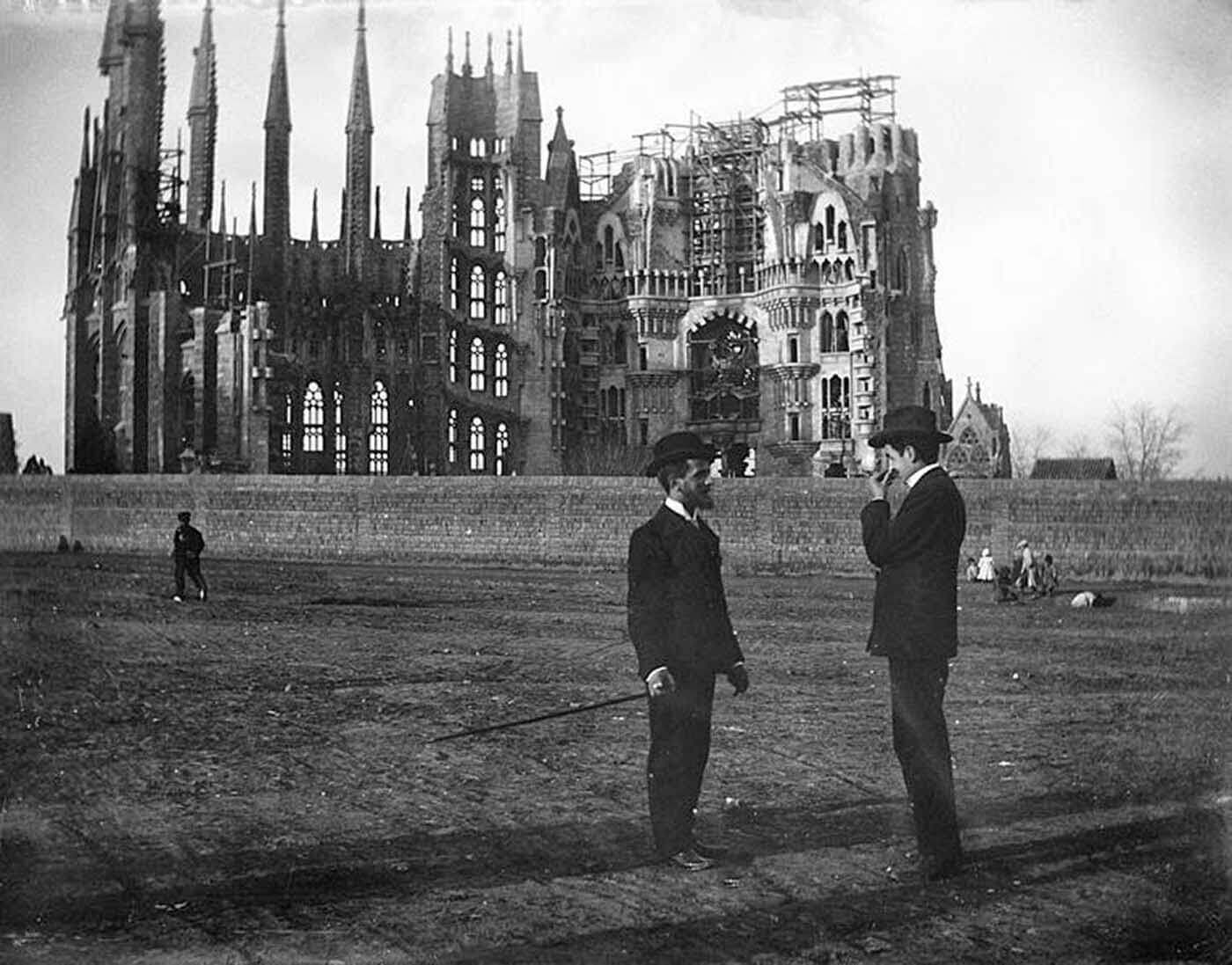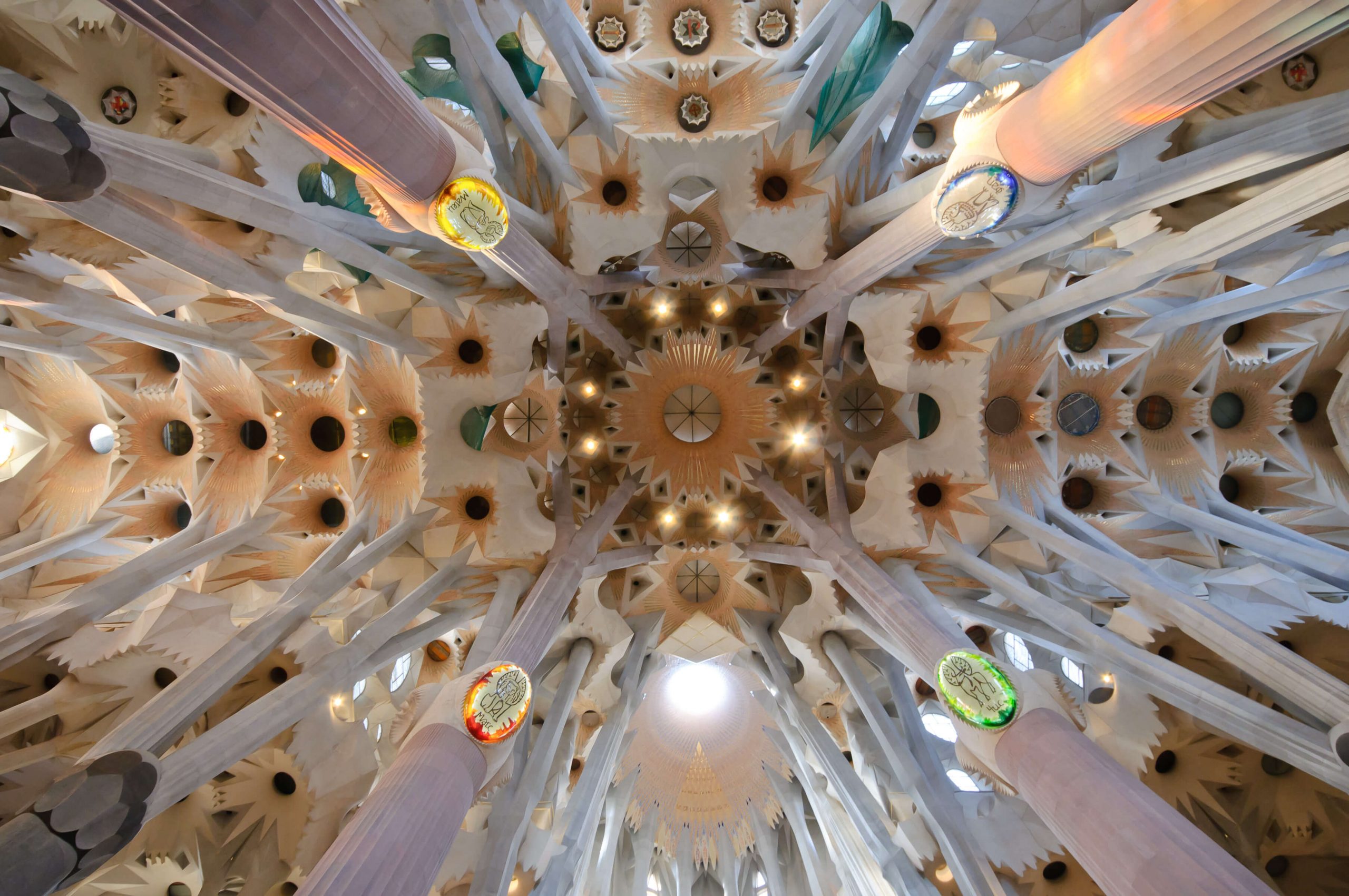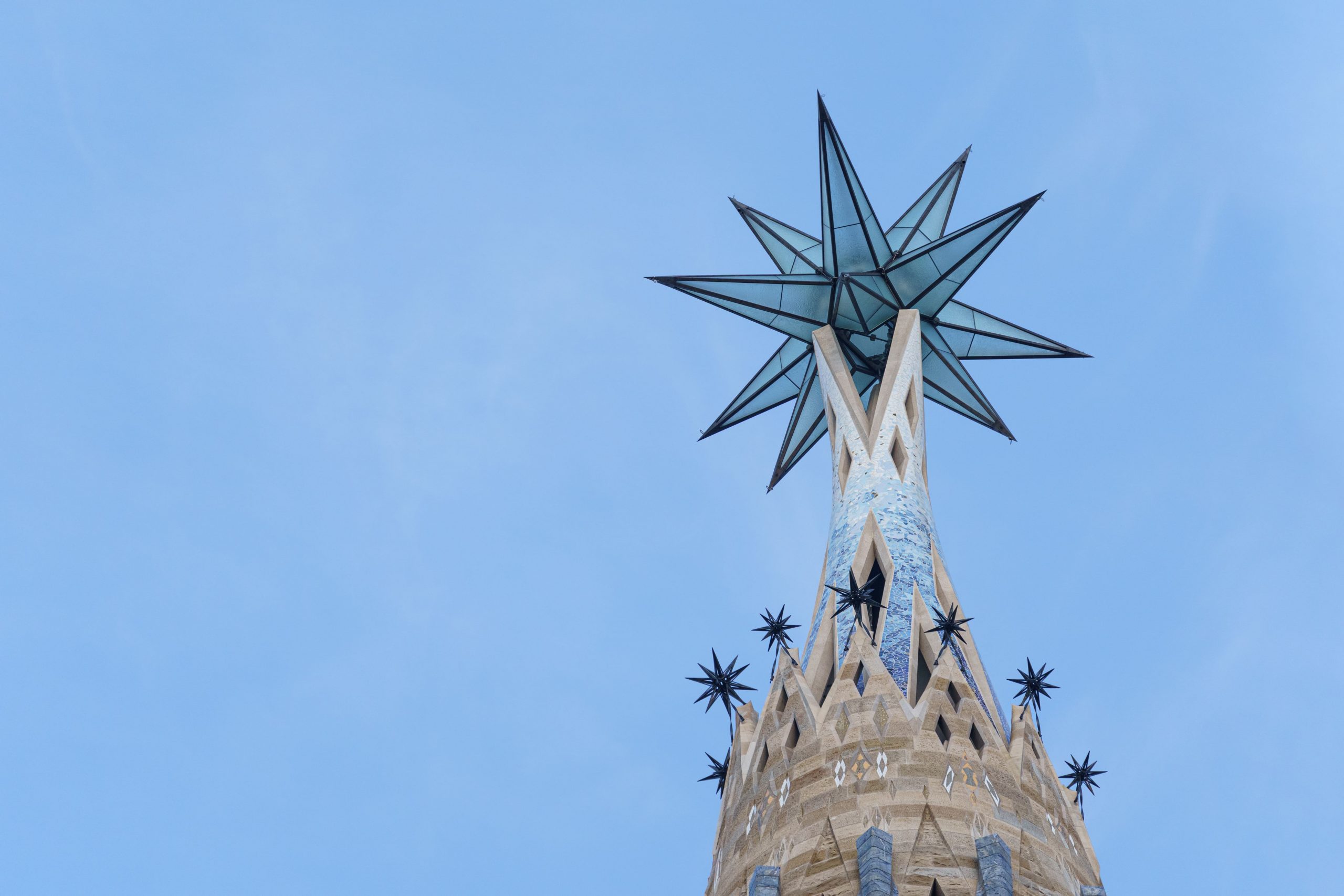-
History
The construction of the Sagrada Familia was commissioned by bookseller and philanthropist Josep Maria Bocabella. Dismayed at what revolution and industrialisation had done to Barcelona, he planned to build a church to “awaken sleeping hearts from their tepor”. After securing a piece of land in an expanding area of town, (Eixample) the project was given to Francisco de Paula del Villar, Diocesan architect and head of the architecture school of Barcelona. In 1882 he began to build a church in the Neo-gothic style, only to abandon the project a year later, having completed only a part of the crypt. The project was then passed to Antoni Gaudi, who would completely redesign the church in his own unique style, blending gothic and art nouveau with nature to create the most astonishing and controversial design for a church anyone had ever seen.
Gaudi took the commission in 1883 and signed his first orders as lead architect in 1884; he would spend the rest of his life working on the building. When he died in 1926 barely 20% of the work was complete and work ground to a halt. The Spanish Civil war further delayed the project but then the unthinkable happened. Anarchists attacked the church and the models handcrafted by Gaudi; the only records of his design were smashed to pieces. Construction began again in the 1950s and has continued ever since. Over the years it has taken painstaking work to puzzle together the fragments of the model and to recreate Gaudi’s design from the few photographs and drawings that were left.


-
Design
The Sagrada Familia is a big church, its size was one of the many criticisms, that it would rival the Cathedral of Barcelona. The plan is of a Latin cross, characteristically Spanish it is wider than its length. The extraordinarily complex plan has an ambulatory, seven apsidal chapels, and three portals each uniquely different in form and decoration. An unusual cloister surrounds the church passing through the narthex of each of the three portals.
The design and plan are extraordinary like everything about the church. Over the years architects and engineers have struggled to understand and recreate Gaudi’s vision. Inspired and taken from nature; the challenge was using engineering to make the supporting columns and stone architecture, behave as the twisting branch of a tree; supporting the whole building as branches on a tree. Gaudi believed you could feel the presence of God most in nature as the sun streams through the trees in a forest. As you enter into the church you are surrounded by twisting treelike columns of different colours that seem to branch out into a canopy high above. light streams through stain glass windows from every direction as it would be reflected by nature, the effect is simply breath-taking and awesome in the true sense of the word.
-
SPIRES
With a staggering eighteen spires of different height representing the Twelve Apostles, the Virgin Mary, the four Evangelists and, tallest of all, Jesus Christ. Each peak is crowned with a symbol, those of the apostles with wheat, grapes and wine – motifs of the eucharist; the Evangelists are topped with their animal symbol and a glass star was added to the Virgin Mary’s spire in December 2021. When the final spire of Jesus Christ is complete, surmounted by a giant cross, it will reach a height of 172.5 metres (566 ft) making the Sagrada Familia the tallest church in the world. Almost as high as Montjuic, but not quite as Gaudi believed Man’s work should never rival God’s.


-
FACADE
Three monumental facades were planned, each decorated in a different style according to their subject. The Nativity Façade was the first to be completed in Gaudi’s lifetime. Placed on the eastern side so that it receives the rising sun, it is beautifully decorative with elements of nature, the tree of life, alongside the birth of Christ. The Passion façade to the west (built between 1956-1976) in stark contrast, is hard and bare with skeletal features and gaunt, tormented figures. The last, the Glory façade to the south commenced in 2002. Representing Jesus Christ, it will be the grandest adorned with a multitude of sculpted figures representing the gifts given by Jesus, the seven deadly sins and seven virtues it will serve as a main entrance to the nave with seven doors representing the sacraments.